Features of finishing nails
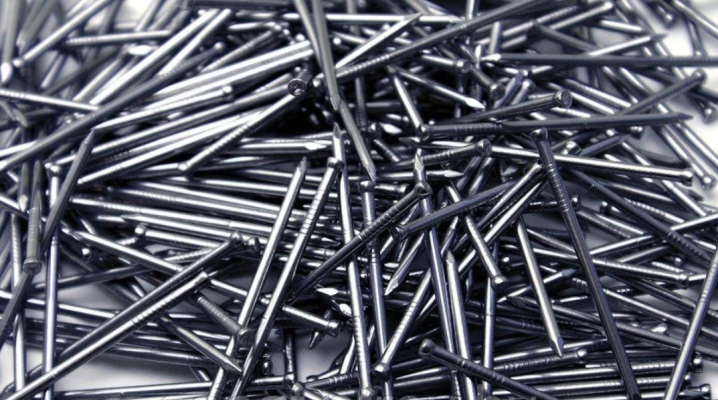
To complete the final finishing carpentry work, the so-called finishing nails are used. They are used in the case when it is necessary to cover the working surface with plywood or clapboard, as well as for the imperceptible connection of two decorative elements to each other. In addition, finishing nails are very much in demand when you need to fix glazing beads on window frames or cladding on a veranda or balcony.
The furniture industry also does not pass by these hardware - nails are used to fasten furniture upholstery, to fix plywood walls on the back of cabinets, when installing decorative elements. To do such finishing work neatly and aesthetically, special hardware helps, in which, in comparison with ordinary nails, the head has a much smaller size. Invisible caps are able to reliably hold the material to be joined, at the same time they practically do not stand out against the general background of the material.
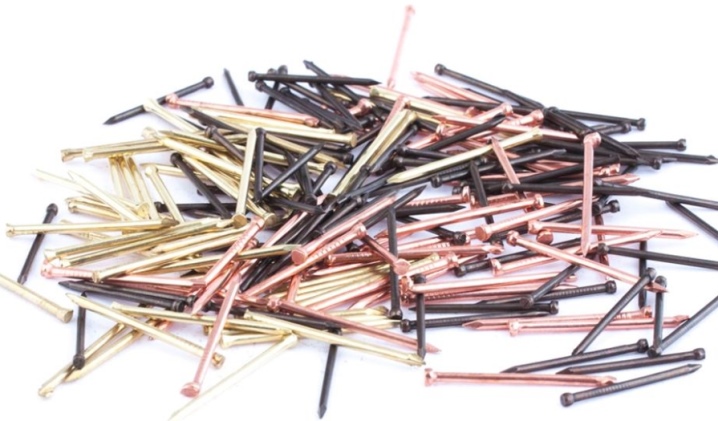
What it is?
If we compare ordinary joinery hardware and finishing nails, then the latter look in such a way that you can notice the difference in their cap. At the finishing hardware, the hat has a small diameter, but a large height. According to GOST standards, the height of the head is the same size as the diameter of the nail. In addition to the usual models of such finishing hardware, options are also available that have a small depression located in the middle of the cap. Such a recess is needed in order to abut the end of the center punch against it and, with the help of this device, drive the rod of the finishing hardware deep into the material.
Finishing hardware, besides the advantages, also has some disadvantages:
- if it is necessary to remove this finishing nail from the material, it will no longer be possible to do this;
- Compared to construction nails, finishing hardware creates a weaker connection.
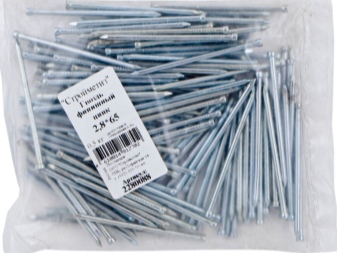
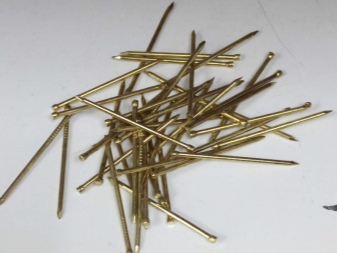
The release of finishing hardware is carried out in compliance with technical conditions, that is, according to TU, although the drawings for this product are regulated by GOST. Modern manufacturers make finishing hardware according to GOST standards only from unhardened steel wire rod.
The characteristics of hardware finishing products are as follows:
- permissible errors in the size of the section, regulated by the standard;
- the cut angle of the nail point must be at least 40 °;
- deflection of the product by a certain factor of the total length of the bar is allowed.
Checking the quality of hardware in the factory is carried out by laboratory tests. A lot of nails can be considered suitable if the percentage of deviation from the standards does not exceed 0.5% of the total weight of the hardware.

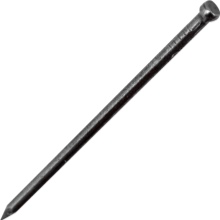
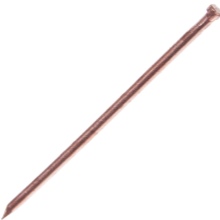
Areas of use
In some cases, finishing carpentry work requires joining two surfaces together in the most accurate way so that the nail head does not spoil the appearance of the product. Such a need may arise in the following cases:
- creation of fastening for the lining;
- fasteners for platbands of interior doors;
- to imitate timber from wood;
- for installation of floor plinths;
- when installing finishing corner strips;
- in the process of laying parquet boards;
- for fixing narrow slats;
- in the process of manufacturing furniture products;
- for the purpose of installing decorative elements.
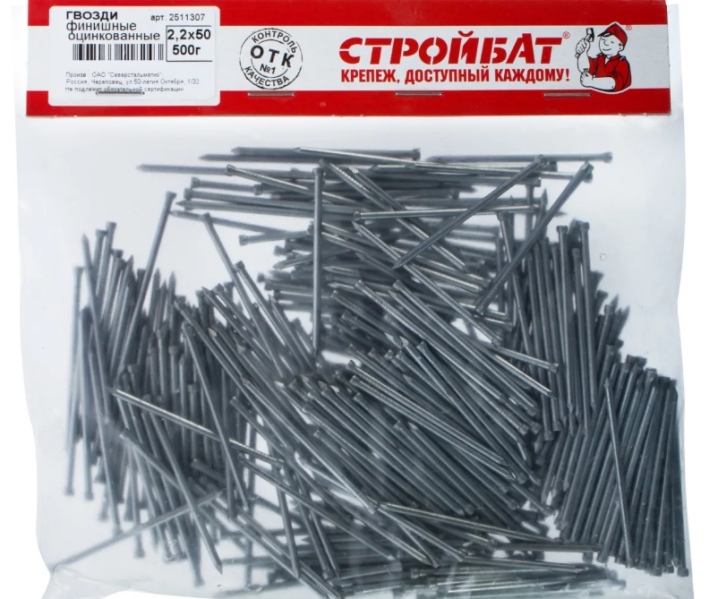
Most often, wood parts are fastened with finishing hardware, where they are less often used for chipboards or plywood. When working on surfaces that are vast in area, these finishing hardware can be applied to the nailer. - devices in the form of a pneumatic nail gun, somewhat reminiscent of a carpenter's stapler. Hardware with an anti-corrosion coating can be used for outdoor work, as well as in rooms with a high level of humidity, while their counterparts that do not have such properties are applicable only in dry rooms. Corrosion-resistant nails are considered hardware made of stainless steel or having a galvanized coating.
Stainless steel nails are considered the most resistant to moisture, and zinc-coated nails are recommended for use only for indoor use.
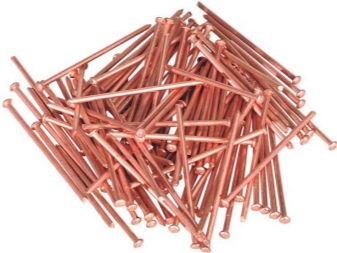
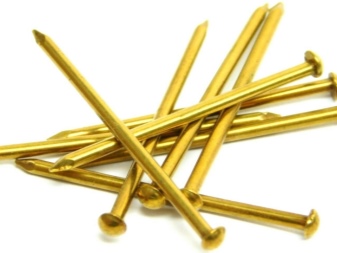
Species overview
The production of finishing hardware is carried out on special automatic machines. The material for the products is low-carbon steel wire rod. Products are made by cold die forging. For the manufacture of finishing nails, brass, bronze or brass-plated bar can also be used. Brass finishing nails have a pleasant yellow hue and are most often used in furniture making. Brass nails do not need corrosion protection, so zinc is not applied to them.
Galvanized hardware and stainless steel finishing nails are always white in color, and you can also distinguish them from each other by their appearance. Stainless steel hardware has a pronounced silvery sheen. Such nails, used for finishing, are valued for their durability and high fastening strength.

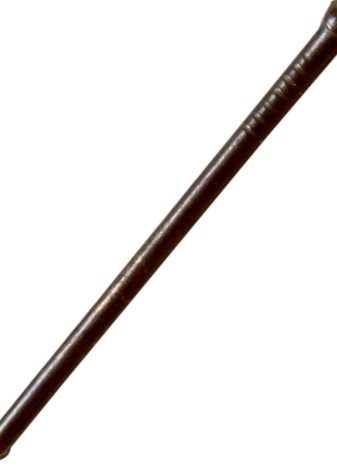
By the type of protective coating, finishing hardware is divided into:
- galvanized - have a grayish-silver tint and are used at low humidity;
- copper-plated - have a reddish-red color and are used in conditions of high humidity;
- chrome plated - have a shiny silver color and are used in high humidity;
- brass plated - have a light yellow tint and are used in cases where the result of the work should look neat and aesthetically pleasing, can be used in a humid environment.
In addition, finishing nails can be made without any coating - these are ordinary steel hardware, their color is dark gray, while the metal is susceptible to corrosion and therefore does not have high strength.
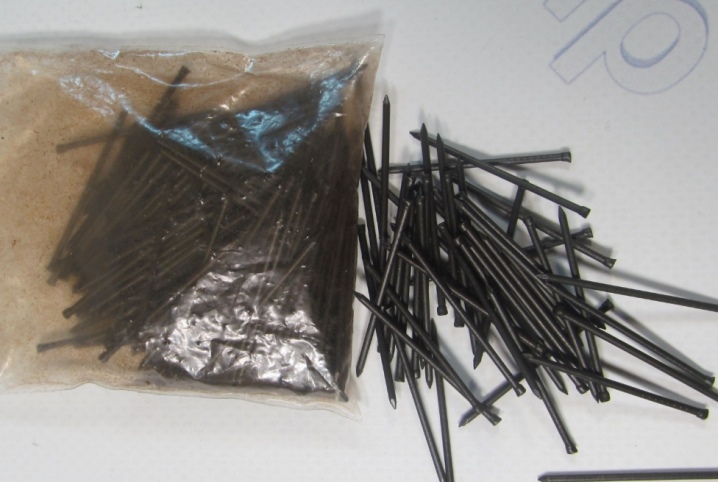
Dimensions and weight
Since the function of finishing nails is to be inconspicuous, their size can be in the range of 20-90 mm, and the diameter varies in the range of 1.6-3 mm. For example, to fasten the upholstery fabric to a furniture product, the smallest hardware in diameter, that is, 1.6 mm, can be used. If you want to fix the lining, nails 6x40 mm can be used, where 6 mm is the diameter, and 40 mm is the length of the nail. The maximum length of such products reaches 90 mm, but the length of 70 mm is rarely used, since when hammering such a long leg, the hardware bends and causes a lot of inconvenience in work.
The larger the size and diameter of the finishing finishing nail, the higher its weight. In retail outlets, the weight of hardware products is measured in kilograms and is counted by taking 1000 pieces. nails of a certain size. The table will clearly show you the ratio of the parameters of the diameter and length to the weight of the hardware product.
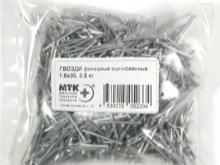
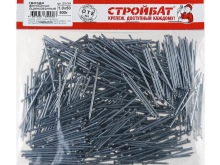
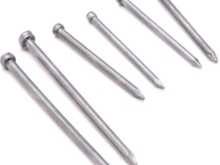
Length in mm | Diameter, mm | Hardware weight in kg (1000 pcs.) |
20 | 1,6 | 0,36 |
30 | 1,6 | 0,46 |
40 | 1,8 | 0,83 |
45 | 1,8 | 0,95 |
55 | 1,8 | 1,10 |
60 | 2 | 1,38 |
70 | 2 | 1,57 |
80 | 3 | 4,7 |
90 | 3 | 4,9 |
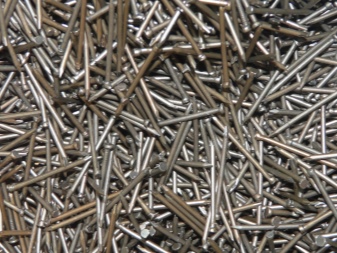
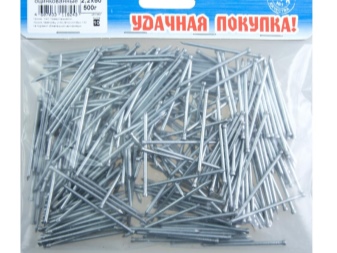
At the production site, the hardware is packed. For wholesales, they can be packaged in boxes, the weight of the products will be 5-25 kg, and for retail, the finishing nails are packaged in 200 g or 10 pcs., And there is also small-scale wholesale packaging that does not exceed 1 kg.
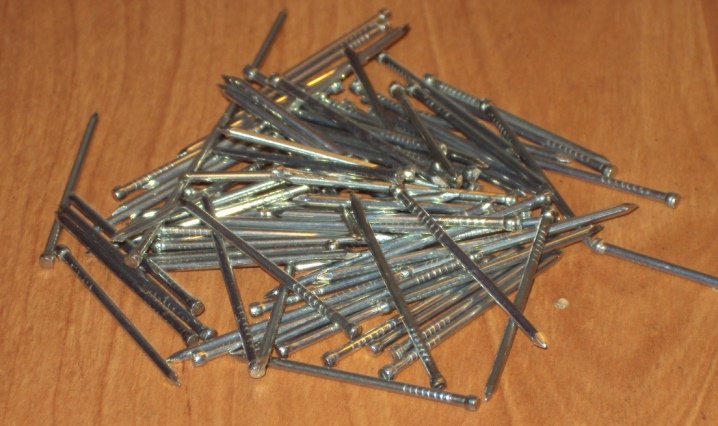
Installation features
To avoid the fact that during the hammering, the thin finishing nail will suddenly bend, experienced craftsmen do not recommend taking hardware, the length of which exceeds 60-70 mm. It is important to remember that the leg of a thin nail, together with its high head, must be completely buried in the material. To fulfill this condition, it is important to choose the right size of hardware before starting work. It is easy to do this - determine the thickness of the part to be fixed and add another 5-7 mm to the result obtained for fastening reliability. When performing finishing work, a properly selected tool will help to cope with the task.
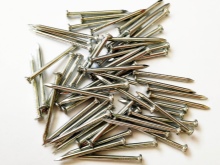
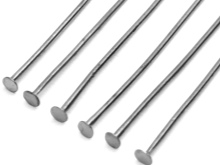

Tool selection
Finishing work looks aesthetically pleasing only if the head of the finishing nail is completely and evenly recessed in the material, it should be practically invisible against the general background of the material. You can get this result if you use devices for driving the finishing hardware.
- Doboinik - is a rod made of metal and shaped like a cone. One end of the metal rod is thin, it is with this part that the doboin is connected to the small head of the nail. Doboiniki are produced in 2 types. There is an option that has a special recess for the nail head - this is convenient because the tool does not slide off it during the hammering process. The second version of the doboiner also has a deepening, but it is made with grooves. This shape allows you to firmly fix hardware with recesses on the head. Driving in the finishing nail is carried out using the extended side of the doboynik, it is on it that all the hammer blows are carried out.
- Neiler - This is a kind of pneumatic pistol, which is intended for hammering in finishing hardware. Such devices for driving nails must be selected, focusing on the size of the head and the diameter of the nail leg. The process of hammering in finishing hardware with a pneumatic assembly gun is faster than hammering in nails with a conventional hammer. Often, nail masters can call the word "stapler", which, according to the principle of operation, is one and the same.
In order to carry out finishing work correctly and accurately, it is necessary to know and observe the technology of this process.
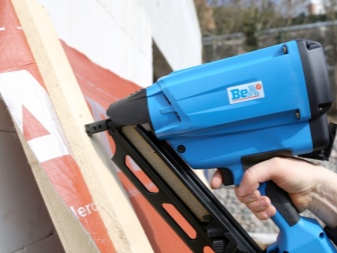
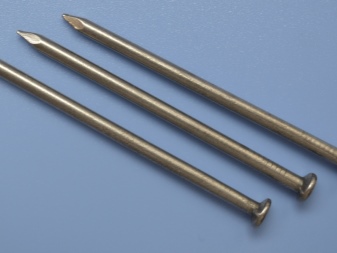
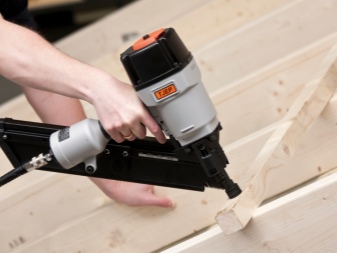
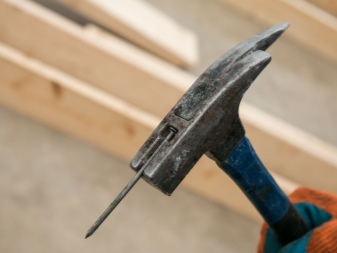
Technology
In order to ensure that the finishing nail looks beautiful and aesthetically pleasing when performing finishing work, it must be hammered strictly in the center of the board and with a uniform pitch for each such detail. You need to drive in the finishing nail slowly and carefully, while you need to make sure that the hardware enters the material always strictly at the same angle, equal to 90 °. If you drive in a finishing finishing nail at an angle of 45 ° or at different angles without controlling this important point, then, according to many experts, the result will spoil the appearance of the finished work, since the head of the finishing nail will be unevenly sunk into the material.
The process of installation finishing works does not require a lot of experience, and the skill of hammering such hardware comes pretty quickly. In your left hand you need to take the finishing hardware and hold it with your fingers. Next, the hardware is attached to the intended place of hammering. They hold a hammer in their right hand and strike neat but precise blows on the head of the nail. During driving, the work of the hammer must be controlled - the impact force should not be too great, so as not to bend a thin nail.
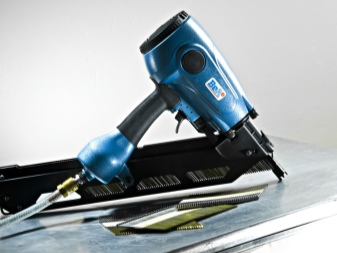
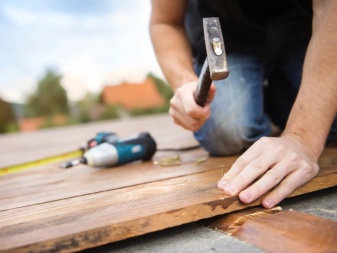
Holding the finishing hardware with your left hand, your right hand with a hammer continues to drive it in until the cap sinks into the material. If at first it is difficult to do this, you can use a doboiner - it will help to qualitatively drown the nail head in the material and will not damage the finish with hammer blows. If all stages of the work are performed correctly and accurately, then as a result you will get a reliable fastening of decorative elements with a neat and aesthetic appearance.

How to drive finishing nails into the platband, see the video.













The comment was sent successfully.